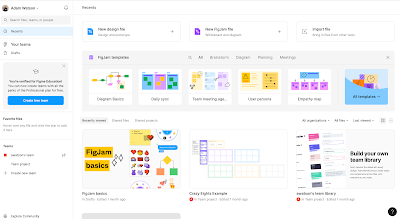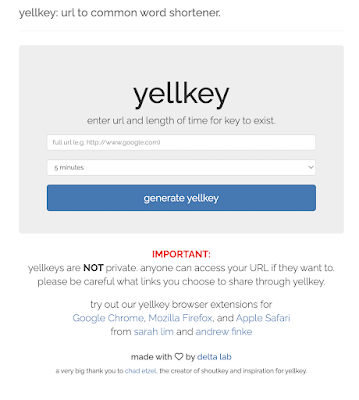Today's blog entry is a combination of things related to role-playing games. Firstly, if you're a Dungeons & Dragons fan, we need to celebrate the new movie that premieres today (I plan on seeing D&D: Honor Among Thieves with my youngest daughter this weekend)! There's also some upcoming adventures on the KyEdRPG front:
I'll do an Edtech Elixirs entry next week with links to the episode and the article once they go live online.
Meanwhile, in today's entry, I'm happy to share an interview with teacher David Bennett. As you'll see, he brings several perspectives that I haven't yet discussed here or over at KyEdRPG: he's a Kentuckiana elementary teacher integrating role-playing games with his students, he's using a game other than D&D, and he's doing so in a short time frame during the instructional day. Without further ado, let's get to the interview (slightly edited for clarity)!
David, welcome to Edtech Elixirs! Tell us about yourself.
I started at
Borden Elementary School in southern Indiana last November as a 5th grade teacher. I’m new to teaching after just leaving a career in marketing that I had for the last 5 years, with a company I’d been at for 10 years. I made the switch because I had always felt teaching was a calling, and during Covid I had begun to wonder about my future. I truly loved the job I had but felt it wasn’t really what I should be doing, so I started in the "Transition to Teaching" program at IUS.
You shared with me that you play a fantasy role-playing game called Pathfinder with your students during recess, which is definitely unique! However, before we get more into that story -- can you tell us about Pathfinder and how it is different than D&D? When I first decided to run a game with my students during recess, my original plan was to run Dungeons and Dragons. Character creation was easy with
D&D Beyond, and there are plenty of ready made materials to use. However, our first session of combat was taking too long, and it was a lot to keep track of during a 30 minute recess. So I thought about other systems I’d played in the past and remembered
Savage Worlds, which is a system that is slightly less detailed than D&D, with the idea being that you tailor make the system to fit your needs. However, I still wanted to do fantasy, so I looked at the fantasy options for Savage Worlds. It turns out that just around a year ago, Pathfinder and Savage Worlds got together and there was a
port of Pathfinder for Savage Worlds made. Going just a bit deeper into the weeds here, Pathfinder was made as a continuation of the 3.5 system of D&D, using the old 3.5 rules, but creating their own world for the lore. The benefits to Savage Worlds is there are less skills and weapons, as well as less feats. Combat is simplified in that most monsters the players fight only have 1 hit point, while major villains have 3. Heroes also only have 3 hit points as well, before they fall unconscious. This keeps combat flowing because most of the time if the characters hit an opponent a simple roll will say if the opponent is still in the game or not. That means less time keeping track of hit points for monsters, When it comes to skill checks all skills start at needing a 4 or better on a roll, but unlike D&D skills are based on die types. So a starting skill is d4, while the highest you can get in a skill is d12.
The shorter answer is, I chose Pathfinder for Savage Worlds due to the streamlining of skills and combat. Due to the short amount of time I have to play with the students, and the number of students who usually play, I need a system where I don’t have to keep track of 4-8 different monsters' hit points, or worry about what an appropriate skill check needs to be. The setting has enough lore that I have a good jumping off point, and there are premade characters that I can let my students look through to decide what they want to play. This makes character creation a breeze as well, as almost all needed information can fit on a half sheet of paper. Also, if you are just starting to roleplay with students and want a cheaper alternative to D&D with less rules, there are plenty of other options as well. The truth is, the system you choose isn’t nearly as important as how you play the game. Give your students the chance to make their own decisions and feel like they are impacting the world you created, and the game will be enjoyable to everyone, no matter what rules you are using.
What inspired you to start playing Pathfinder with your elementary students?
To be honest, when I first started teaching, I didn’t really have any intention of starting a fantasy RPG group. I assumed that students today would be much like the elementary students from when I was a kid, and games like D&D wouldn’t really be on their radar. However, Stranger Things has really changed that, and when I started teaching I kept over hearing students talking about D&D. So I talked to Ms. Hurst, the principal at Borden Elementary, and asked if I would be able to run a group during recess. I wasn’t sure what the rules were for things like that. She recommended I make up a permission slip and students who wanted to try just had to get the okay. At first I had about 10 students sign up. So really my students showed their interest and I just went about seeing what I needed to do to make it happen.
When it comes to how many students play my numbers can fluctuate, especially when the weather has been too cold or rainy, and our session might be one of the nicest days in a week. I always let students know that I completely understand when they choose to go outside and play versus staying in and playing Pathfinder. I do this for two main reasons. The first is that unlike regular sports where being on a team is a commitment and the team will suffer if you aren’t there, tabletop role-playing games (TTRPGs) are collaborative storytelling and I can alter the events of the story to make up for a student not being able to make it so that the students who are there aren’t going up against a challenge they have no hope of overcoming. The other reason is, playing with someone who doesn’t want to be there isn’t fun for that person, or the other players. With only 30 minutes of playtime, students want to feel like they got to spend their time on something worthwhile.
What are the challenges of playing a TTRPG with elementary students, or playing for only 30 minutes?
My biggest challenge is giving each student a chance to shine in a 30 minute session. With some sessions getting up to 7 players, that’s less than 5 minutes of real action per player. Luckily for me, I have a bit of time I can spare right before the students have recess, so I usually have everything set up before they get up to play. The only other challenge is helping students to understand that their in-game actions can have in-game consequences. I had a student get bored in one of our sessions and grab a civilian and jump into a pit holding the civilian. I explained that now the town guards were going to be looking into this to figure out why he did that. Other than that, most sessions go as smooth as any other TTRPG I’ve run before.
Students learning natural consequences from bad actions in a safe game environment sounds like an awesome reason for using a TTRPG in a classroom! What other positive effects on your classroom culture and learning have you noticed?
I honestly believe that for me the best effect is it helps me get to know some of my students who aren’t very outgoing during class normally. I’ve gotten to see sides of some of my students that I doubt I would have ever seen in the classroom setting alone. I also feel like the game promotes problem solving, and team work in a way that you can’t feasibly do in real life. I also think it's nice the types of students who play. At least for my grade level I’ve got kids in band, kids in sports, kids who are high achievers, and some who struggle. The mix creates an interesting dynamic in our sessions.
What advice would you have for an educator wanting to incorporate a role-playing game into an elementary classroom?
That’s tough. While I certainly see positives in my game sessions, I also know that it’s successful because the students want to do it. I would never try to use role-playing games with students who didn’t show an interest. However, like any thing we do in life, you get out of it what you put into it. If you want to use it as just a fun activity where students roll dice and fight monsters, that’s fine. If you want to help them work on social skills like empathy, you have to put those situations in the game. You want them to learn to solve problems together as a team, you have to create a problem that they can’t solve with one person doing all the work. I’m not saying I’m a pro at this. I just think that TTRPGs can be a tool to help work on these issues, but only if you create those opportunities.
Reflecting on what you've done and looking ahead, what's next?
If I’m being totally honest, I don’t know that I’d recommend a recess session for everyone. I started it because I wasn’t sure how popular it would be, and I had no idea at the time of how to start an afternoon type organization. 30 minutes goes by so fast, and if you don’t have time to set up beforehand, and take down as well, you’re going to lose a lot of your time. That being said, I’m going to be working on an afterschool program for next year due to how much interest there has been.
Thanks again to David for sharing his wisdom!






















